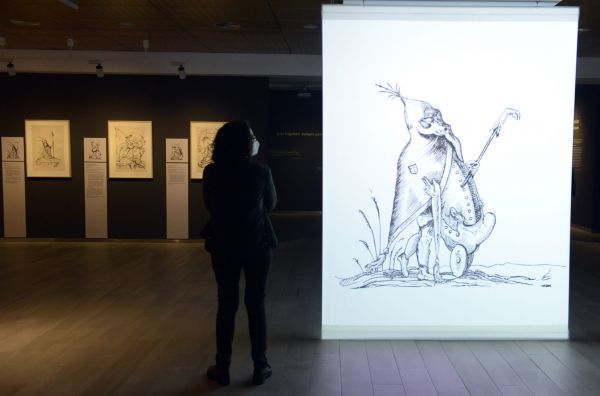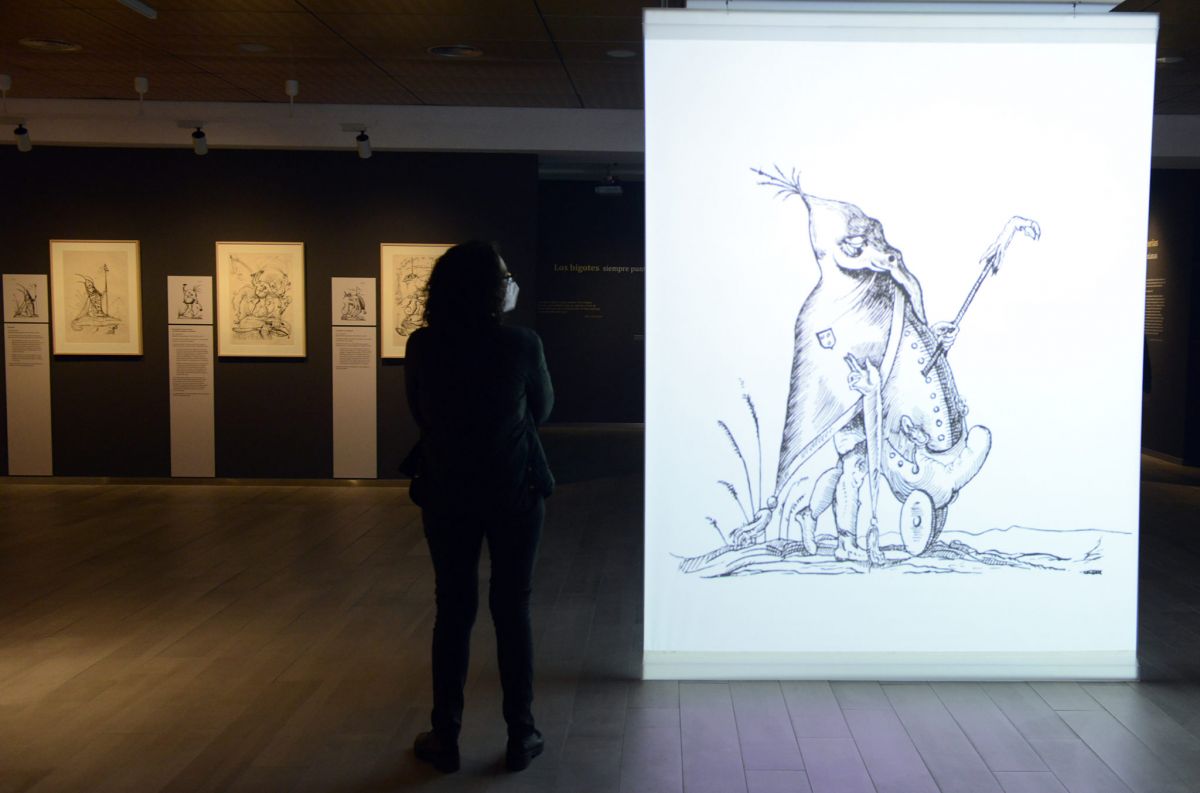Exhibition "Dalí. Lithographs of the Pantagruélic Excesses"
Images
Information
Description
The Dalí exhibition . Lithographs of pantagruélic excesses, produced by the Bancaja Foundation for display at its headquarters in València, shows the series of graphic work made by Salvador Dalí inspired by the literary work Gargantúa and Pantagruel written by François Rabelais in the 16th century and in which the Catalan artist had as a direct source the prints made by François Desprez for the edition published in 1565 by the publisher Richard Breton.
The exhibition, curated by the philosopher, esthete and art critic Fernando Castro Flórez, brings to the public one of Dalí's lesser-known facets, that of an illustrator, through this series of 25 lithographs on Japanese paper that show a gallery of characters crazy and fantastic that are represented between the cartoon and the farce. The Catalan artist covers 25 of Desprez's 120 illustrations in 1973 with his personal style and brings his own critical perception, maintaining the original composition and adding details that underline its fantastic and satirical character.
The twenty-five plates that make up this series of engravings refer, in the manner of monstrous beings, to the burlesque adventures of Pantagruel. The models have their precedent in the so-called droleries, novel arguments that are configured in the imagination of the creative genius himself and that can be observed in the peculiar iconography of El Bosco, Pieter Brueghel the Elder, Jacques Callot or Goya, among others. artists. Grotesque beings are observed in which everyday aspects are reflected, references to the carnival tradition and themes such as the capital sins. Lust, gluttony and greed shamelessly portray these characters in prints that mix the dreamlike, the surprising and even the eschatological.
The exhibition also brings together documents, objects, press clippings, the reproduction of some images and publications and three audiovisuals on Salvador Dalí that place these 25 lithographs in the context of the artist's powerful and particular imagination. In the exhibition proposal Dalí's lithographs coexist with the reproduction of the 25 Desprez prints on which the Catalan artist worked, and includes the reproduction of the complete series of 120 illustrations by the 16th century French engraver.
Pantagruel, Desprez and Rabelais as inspiration
Throughout his artistic career, Salvador Dalí assumed the idea expressed by Eugenio D'Ors when he stated that “everything that is not tradition is plagiarism” and the Catalan artist took up on many occasions works from the past of artists such as Rafael, Giorgione, Ingres or Manet. In this look at the past, Dalí also found in the works of Desprez and Rabelais around Pantagruel an artistic motivation from which the series of 25 lithographs was born.
François Rabelais (1494-1553) was a 16th century transgressor. A student of classical languages, he took ecclesiastical orders as a Franciscan friar in 1520, which he later changed to Benedictine habits and also left to become a secular priest and dedicate himself to medicine and literature. Rabelais achieved great notoriety through his literary compositions that were a faithful example of his incomparable personality, his mocking and independent character. His work Gargantua and Pantagruel is made up of five books that had appeared individually since 1535 and that were condemned both by the Sorbonne and by the French Parliament, considering them immoral and obscene, which from the beginning gave the novels of Rabelais. Rabelais's books constitute a ferocious satire against the most respected institutions of his time, all through a carefree air, reflecting his personal way of understanding and behaving in life. In 1564 the complete novel was published posthumously.
In 1565 Richard Breton published Les songes drolatiques de Pantagruel in Paris , a collection of 120 woodcut prints by an anonymous author who signed them using the name Rabelais and attributed to the publisher and engraver François Desprez. The Desprez carvings were reissued in 1823-26 by Dabilon in Paris and commented on by Esmangart and Johanneau.
The evolution from Desprez to Dalí
'The drolthic dreams offer figurations of characters whose context is the festive laughter of the people and, above all, the experience of carnival as an authorized transgression. Desprez's drawings, strictly grotesque, go through Dalí's paranoid magnifying glass to offer “excessive” deformations', says Fernando Castro.
Dalí adds elements to the drugs or caprices that Desprez created based on Rabelais that underline the playful and eschatological dimensions, expand the excitement and, of course, unleash excess. “The naturalness with which Dalí appropriated the satirical characters of those Capricious Dreams of Pantagruel - writes Beatriz Fernández Ruiz - is very revealing of his complicity with the grotesque tradition represented by Bosco and Brueghel. Both the Desprez and Dalí images criticize capital sins by subjecting the figures to grotesque transformations, which are related to carnival invention. Lust, gluttony and greed shamelessly portray these characters, barely semi-human ”.



